Eyelid Piercing: Risks, Cautions, Healing, And Aftercare
All you need to know about this extreme piercing that has taken the internet by storm.
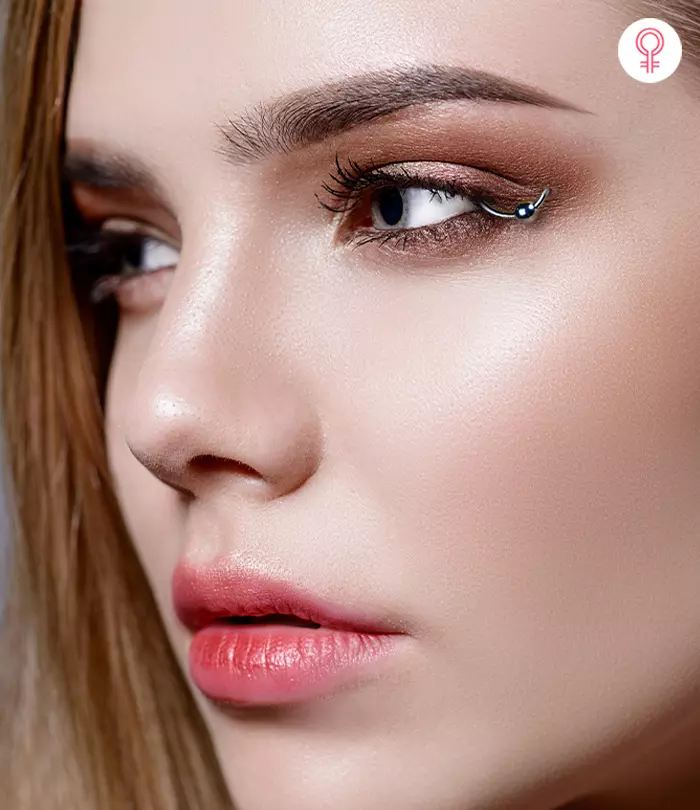
Image: StyleCraze Design Team
Eyelid piercing is a fast-spreading trend in the world of edgy body modification, challenging the adventurous to step out of their comfort zone and embrace riskier methods of self-expression. While its exact origins remain unknown, this type of piercing has evolved as a cosmetic procedure and been around for a while. It may have been inspired by the eyebrow piercings introduced in the 1970s by punk icons. As the name suggests, it involves a dermal piercing on the upper or lower eyelid. It is extremely risky due to its close proximity to the eyes, due to which there is always a risk of eye damage as well as bacterial infection associated with it. Owing to these factors, medical experts advise against getting your eyelids pierced. But, despite all the health risks and challenges of getting an eyelid piercing, it seems to have captured the fancy of many. If you are one of them, this article discusses various aspects of getting one in detail. Keep scrolling to learn more!
 Piercing Guide: Eyelid Piercing
Piercing Guide: Eyelid Piercing- Placement: Eyelid area
- Best Jewelry: Captive bead rings, hoop rings
- Cost: $35 to $350
- Pain Level: Medium to high
- Healing Time: 6 weeks to 6 months
In This Article
How Is The Eyelid Pierced?
The eyelid piercing may be done using either of the following methods.
- Manual Needle
This is a traditional process in which a regular piercing needle and thread is used for the piercing. The piercing artist uses a threaded needle to pierce through the desired spot on the eyelid and then ties up the thread. - Special Piercing Device
Some establishments may have a device specially designed for eyelid piercings. It contains piercing jewelry, typically a ring, which has a spring-loaded body and rolls up and down your eyes when you blink.
The piercer may use a clamp for more convenient access and more precise piercing results. Sure sounds intimidating. But does it heal the same way as other dermal piercings?
Key Takeaways
- Eyelid piercings are an extreme form of body modification done for medical or aesthetic reasons, which involves piercing the upper or lower eyelids.
- These piercings can be performed by a licensed piercer using a traditional piercing needle or a special eyelid piercing machine.
- Though eyelid piercings are possible, they are medically discouraged due to the high-level risk they pose for the delicate eyelid skin and eyeballs, which include long-term damage and even loss of vision.
- It is extremely important to diligently follow the piercer’s aftercare instructions and take gentle but thorough care of your piercing to ensure it heals properly.

How Long Does An Eyelid Piercing Take To Heal?
The healing time may vary depending on individual wound healing capacity. However, a general estimation would be anywhere between 6 weeks to 6 months, after which it may be safe to change out the jewelry. The healing process is faster if one follows proper aftercare measures and does not end up with infections or allergies at the piercing site.
Speaking of infections, let us look into the potential risks of getting an eyelid piercing done and how it affects overall eye health.
Risks And Dangers Of Eyelid Piercings
Eyelid piercings are not commonly offered services in all facial piercing parlors due to the high risks they involve. The potential dangers of eyelid piercings are:
- Infections: These are the most common risks involving open wounds of any kind. A study has shown that roughly 10-20% of all body piercings get infected (1). As long as the piercing is fresh and exposed to the elements, there is the possibility of bacterial contamination that may lead to infections if the wound is not regularly and properly cleaned. Bacterial contact may also happen during the piercing process if the piercer does not take proper sanitization precautions. Additionally, a piercing situated close to the eye might also be a bit tricky to clean without experiencing pain or discomfort through contact with the eyeball.
- Allergies: The allergies may be a result of sensitive skin types that perceive certain jewelry materials as foreign objects and reject them. Metals like nickel, copper, cobalt, etc., introduced to the bloodstream during piercing, are common culprits of such reactions (2). The allergy manifests in the form of swollen, itchy, and painful inflammation at the site of the piercing.
- Excessive Bleeding: If you are on blood thinning medication, then your body may be at an increased risk of bleeding (3). This may lead to excessive bleeding during the piercing process and continue after it, prolonging the healing process. In the case of eyelid piercings, the bleeding can also make your eyes water, obstructing your vision.
- Eye Damage: An inexperienced piercer may accidentally poke an important part of the eye like the cornea or tear ducts, leading to long-term damage and potential loss of vision.
- Scarring: Piercings may leave permanent scars on the eyelids, especially if they get infected or develop an allergic reaction (4). As an exposed placement, it may also be a target of regular inflammation, worsening the scars.
- Accidental Vision Loss: The jewelry may snag, loosen, or get displaced, accidentally poking or rubbing against the eyeball in an abrasive manner and causing vision impairment.
Always choose a trusted piercing studio with experienced professionals to avoid the risk of eye damage. Skilled piercers know how to handle delicate areas, like the eyelid, with care and precision. Before making your decision, take time to research the studio’s credentials, read customer reviews, and confirm that they follow strict hygiene and safety standards. A little research goes a long way in keeping your piercing experience safe and worry-free.
All the above complications from piercings considered, if you still want to get an eyelid piercing, you might want to consider the costs involved as well. Move on to the next section for more details.
How Much Does An Eyelid Piercing Cost?
The expenses related to eyelid piercings may greatly vary depending on several factors. Let us take a look at them:
- Location: A parlor situated in a more expensive part of the city will surely charge more than one located on the outskirts. Conversely, a place that offers the services without a license, in a discreet manner, can also charge exorbitantly. However, we highly recommend opting for a reputable piercer against a sketchy one.
- Piercer’s Experience: A licensed professional who has done a couple of successful eyelid piercings armed with the necessary skills, complete cognizance of the risks involved, and zero negative feedback or failures, would charge higher than one who might have performed other dermal piercings, but not an eyelid one.
- Jewelry Type: The metal and style of the jewelry are included in the total costs. The more precious the metal and the more intricate the jewelry, the more it will cost you.
- Aftercare Products: There are aftercare products specifically designed to heal piercings and can be purchased from the piercer or a special store. You may need to use these products consistently for several months until your piercing is healed.
A general estimate would place the costs of a single eyelid piercing anywhere between $35 to $350. Do consider the fact that if you develop allergies and infections, the medical bills can add to the expense.
Once you have an estimate of your budget, you can look up various creative ways to spice up your eyelid piercing. Move on to the next section for some trending styling tips.
Styling Ideas For Eyelid Piercings
Despite the risks associated with eyelid piercings, it continues to be an intriguing accessory statement that captures the fantasies of many due to its rarity. Those who have been able to get successful, drawback-free piercings can even give you a tip or two about styling your own eyelid piercing. Here are a few popular ideas from the internet.
- Classic Hoop Jewelry
View this post on Instagram
Classic hoop jewelry may be used to embellish the rim of the upper or lower lids. They might also be used as orbital piercings between the eyebrows and eyelashes, horizontally or vertically across the lid where a single ring penetrates two piercing holes.
- Small Hoop Piercing
View this post on Instagram
Small hoop jewelry with a captive bead is more suitable for a tight-fit look on the rims of the lids, especially as a double eyelid piercing. They might also be positioned just below the eyebrows for a more comfortable fit and style.
- Piercing On The Corner Of The Eyelid
View this post on Instagram
An eyelid corner piercing may refer to a piercing done either on the outer or inner corner of the eye. Hoop jewelry is more visible and convenient for the outer corner while a little stud is an ideal option for the inner corner.
 Quick Tip
Quick TipIf you would like to play with the technicalities, you can even consider horizontal eyebrow piercings placed just below the eyebrows as an eyelid piercing. At this placement, the jewelry can be slightly away from the eyeballs and reduce the risk of eye damage.
That said, you would be surprised to know about various types of amazing eye jewelry available in the market for this rare piercing style. Learn about them in the next section.
The Best Suited Jewelry For Eyelid Piercing
While a reputed piercing place may offer a wide range of materials for piercings and eyelid jewelry types, we recommend taking a safe, rather than adventurous approach. Go for hypoallergenic metals like titanium or stainless steel to minimize the risk of allergies and metal rejection. Further, opt for a simple piece of jewelry, like a plain ring, that does not snag at hair or clothing further irritating the piercing, at least until it is fully healed.
Once your piercing is healed and free of inflammation or any hint of discomfort, you may experiment with other jewelry pieces such as captive bead rings and barbell rings.
However, for your piercing to heal properly, you first need a proper aftercare regime in place and especially so for a risky piercing on the eyelid that is prone to infections. Check out the next section for a detailed list of aftercare measures that you must diligently follow.
Aftercare Tips For Eyelid Piercings
General aftercare tips after any fresh piercing are applicable for eyelid piercings too. However, since this type of piercing can be slightly riskier owing to its proximity to the eyes. Here are some key guidelines to ensure optimal safety.
- Consult an eye doctor and discuss potential eye health risks in detail before you settle on getting an eyelid piercing done.
- Ask your piercer for detailed instructions specific to the eyelid piercing and follow them religiously.
- Disinfect and clean the piercing 2-3 times per day.
- Use a sterile, wound-washing saline solution with 0.09% sodium chloride to clean the piercing instead of making your own solution as it may become too salty and over-dry the piercing (5).
- Apply a hydrating aftercare cream specially prescribed by your piercer or health care provider, to the area after cleaning to keep it moisturized.
- Drink plenty of fluids during the healing process. This may help in keeping any swelling or infection at bay.
- Avoid swimming in public pools or contaminated water bodies to minimize the risk of bacterial infections (5). Also, avoid taking long baths and showers as exposing the piercing to water for prolonged periods may encourage bacterial growth.
- Avoid doing sweat-inducing activities like exercising, sports, dancing, etc., as the dirt and bacteria-carrying sweat from your head may drip down and irritate the piercing.
- Avoid direct sun or heat contact for at least 2-3 weeks. It may irritate the sensitive, healing piercing, and also worsen scarring.
- Use disposable clean paper towels or cotton to dab away runny eyes instead of cloth towels as they may be contaminated (5).
- Apply ice packs for 10-15 minutes on the piercing if you feel pain, irritation, and discomfort in the pierced area instead of vigorously rubbing it and risking damage to your eyeballs.
- Do not remove the piercing by yourself in case of escalated irritation. Removing a piercing from such a vulnerable area poses a threat to your eyeballs, as well as closes up the piercing unless it is fully healed.
- Take extra hygiene precautions to minimize bacterial contact with your piercing. Keep your work desk, bedsheets, and other frequented areas clean. Also, cover your eye area properly if you step out.
 Quick Tip
Quick TipThe magnetic intrigue and mystery surrounding a pierced eyelid cannot be denied. It does add a rough edge to an individual’s personality. The trend of eyelid piercing continues to gather heat, especially with a younger and bolder generation joining the workforce. However, this extreme piercing comes with multiple health risks, such as bacterial infection, painful inflammation, allergic reactions, excessive bleeding, permanent scarring, and even loss of vision. Therefore, it is important to consult with a healthcare professional and research professional piercers with considerable experience before you get your eyelids pierced. It is equally important to be extra careful with the aftercare process to ensure the piercing heals properly and reach out for help if you experience any challenges during the healing process.
Frequently Asked Questions
Is there any age limit for eyelid piercings?
Eyelid piercings are largely not recommended by medical professionals and hence most establishments may refuse to perform eyelid piercing on anyone who has not reached the age of consent, which is generally 18 in most countries.
Can I get multiple eyelid piercings at once?
It is not recommended to get multiple eyelid piercings in one go. Eyelids have the fundamental biological function of protecting the eyes from potential dangers. Any kind of piercing may hinder that.
How often should I check my eyelid piercings for signs of infection?
During the healing period of the eyelid piercing, check for infections every time you clean the piercing as it is a highly vulnerable spot that is prone to bacterial contact and inflammation.
References
Articles on StyleCraze are backed by verified information from peer-reviewed and academic research papers, reputed organizations, research institutions, and medical associations to ensure accuracy and relevance. Read our editorial policy to learn more.
- Piercing and its infectious complications: A public health issue in France
https://pubmed.ncbi.nlm.nih.gov/11244629/ - Immunological mechanisms of metal allergies and the nickel-specific tcr-pmhc interface
https://www.ncbi.nlm.nih.gov/pmc/articles/PMC8535423/ - Risk factors for severe bleeding events during warfarin treatment: The influence of sex, age, comorbidity and co-medication
https://www.ncbi.nlm.nih.gov/pmc/articles/PMC7239828/ - Complications and hazards associated with body piercing: A narrative review
https://pubmed.ncbi.nlm.nih.gov/37916624/ - Suggested aftercare for body piercings
https://safepiercing.org/aftercare/
Watch: Eyelid Piercing Risks, Costs & Aftercare Guide
Watch this video to discover eyelid piercing essentials: risks, costs, styling tips, and aftercare. Dive in now to learn how to stay safe and stylish!
Read full bio of Anastasiia Gatsko
Read full bio of Aparna Harry
Read full bio of Subhrojyoti Mukherjee
Read full bio of Joyce Joyson






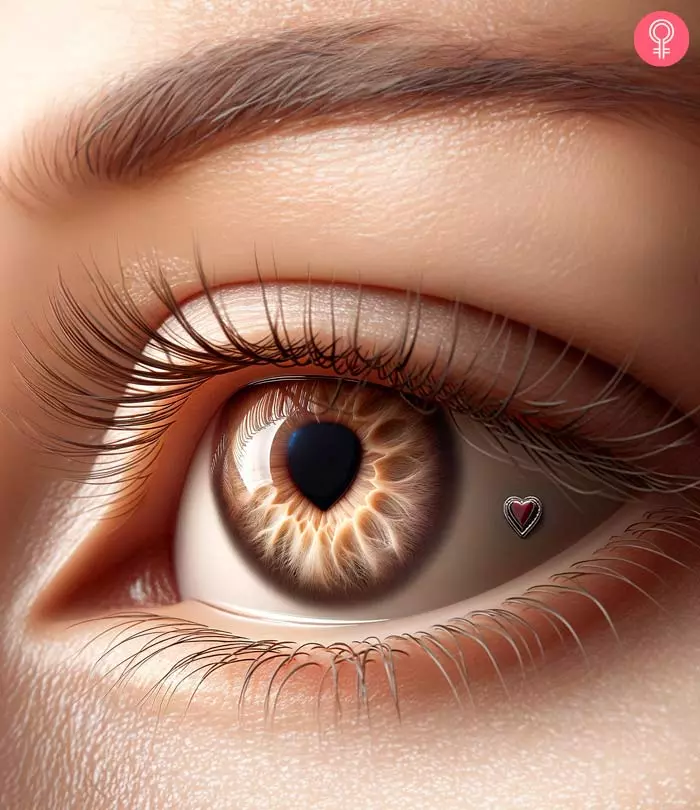
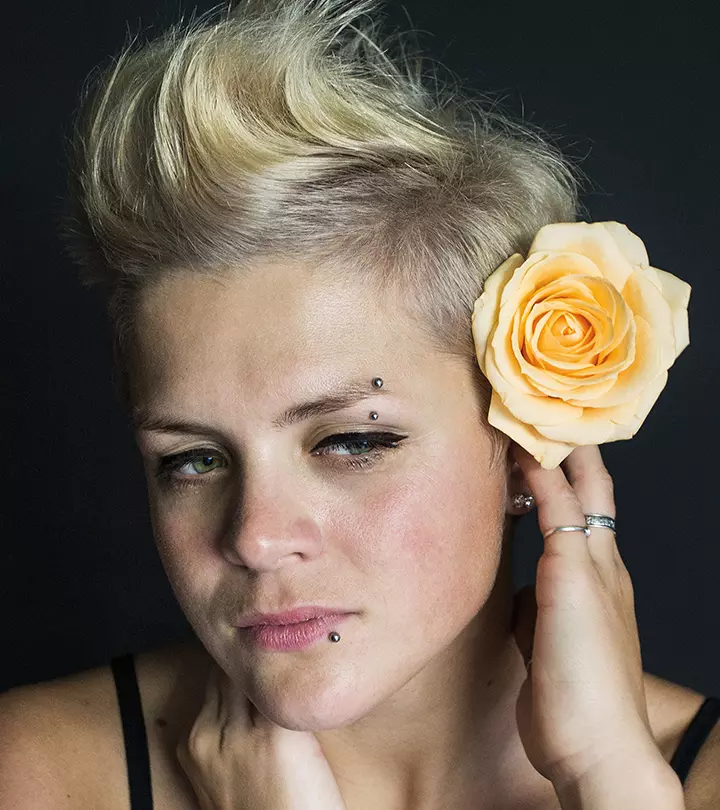
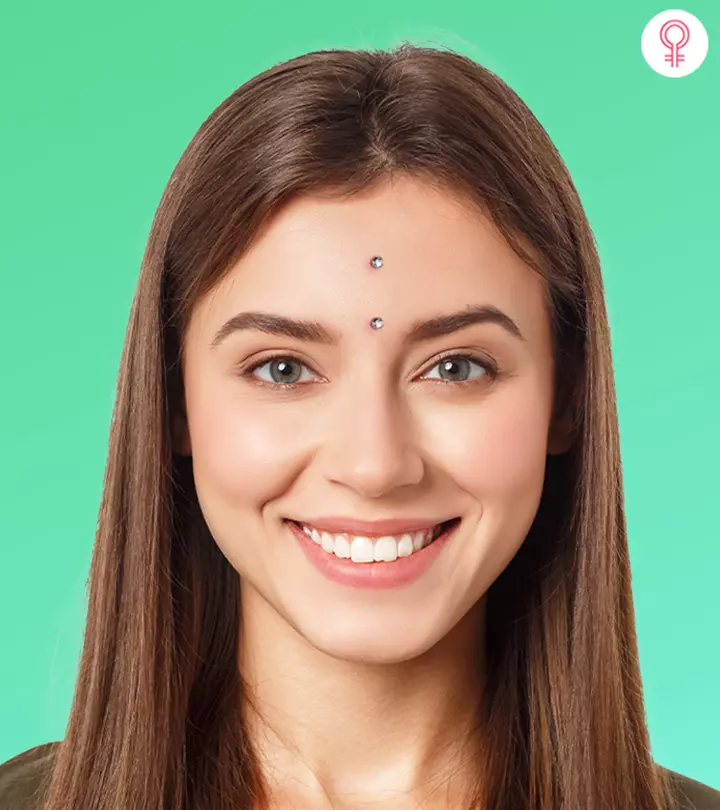
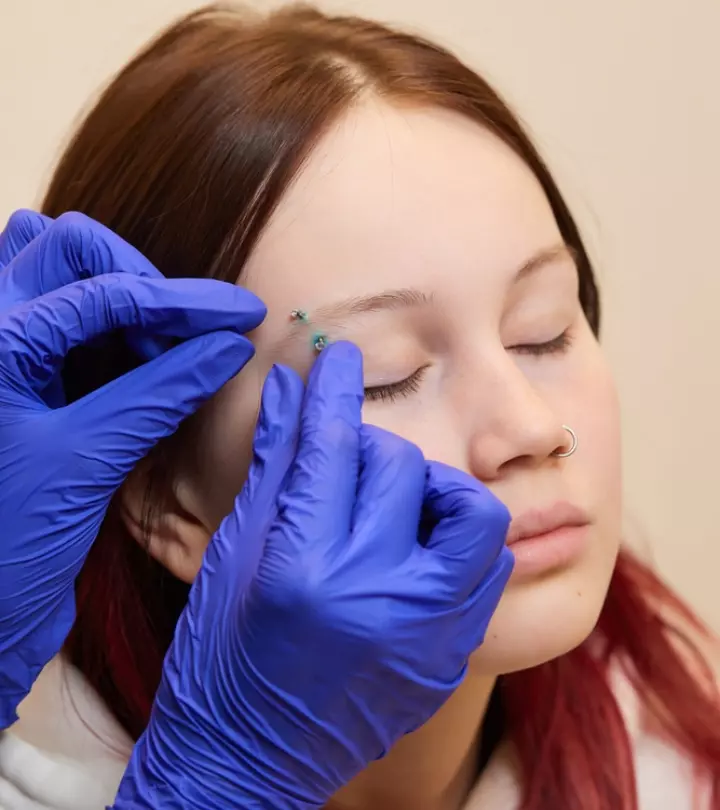

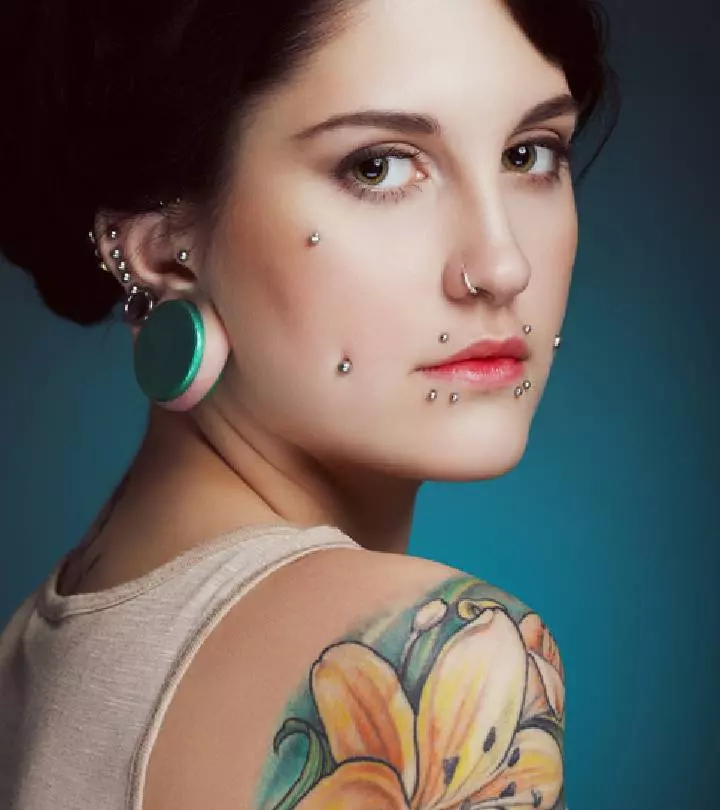
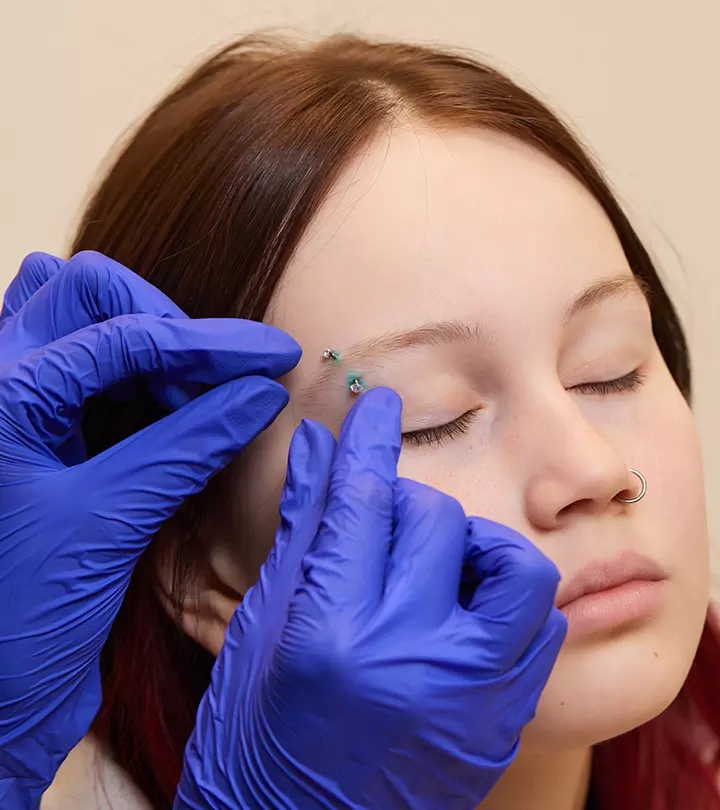

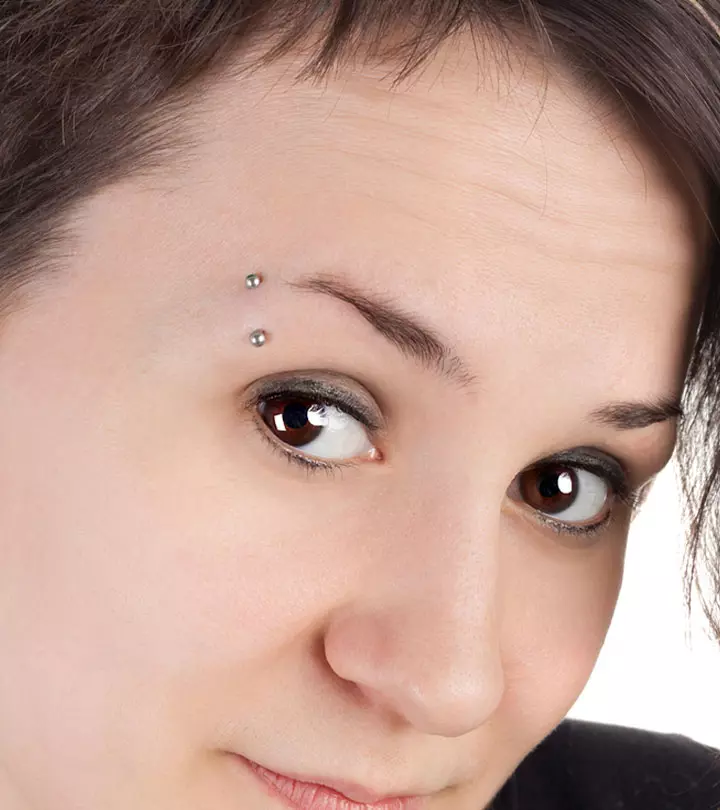
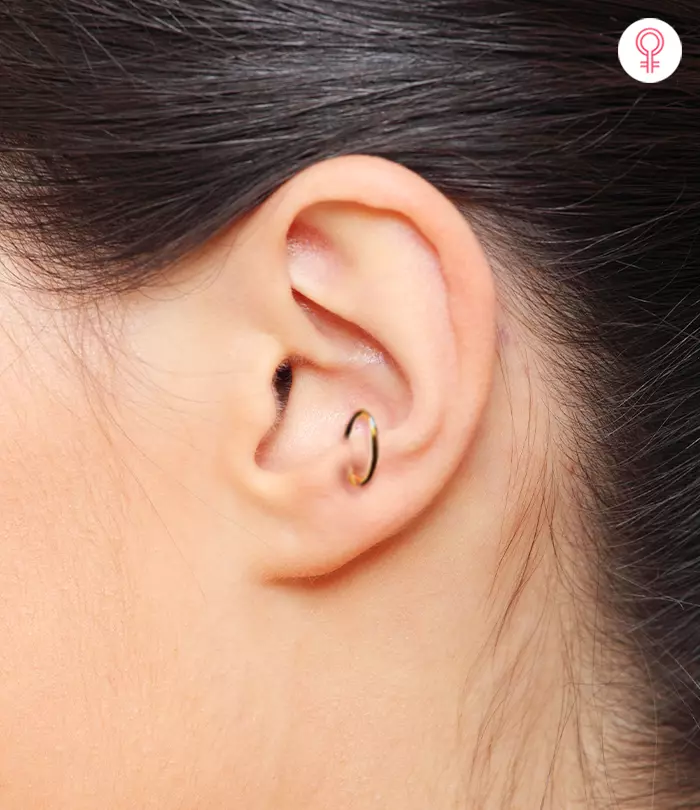
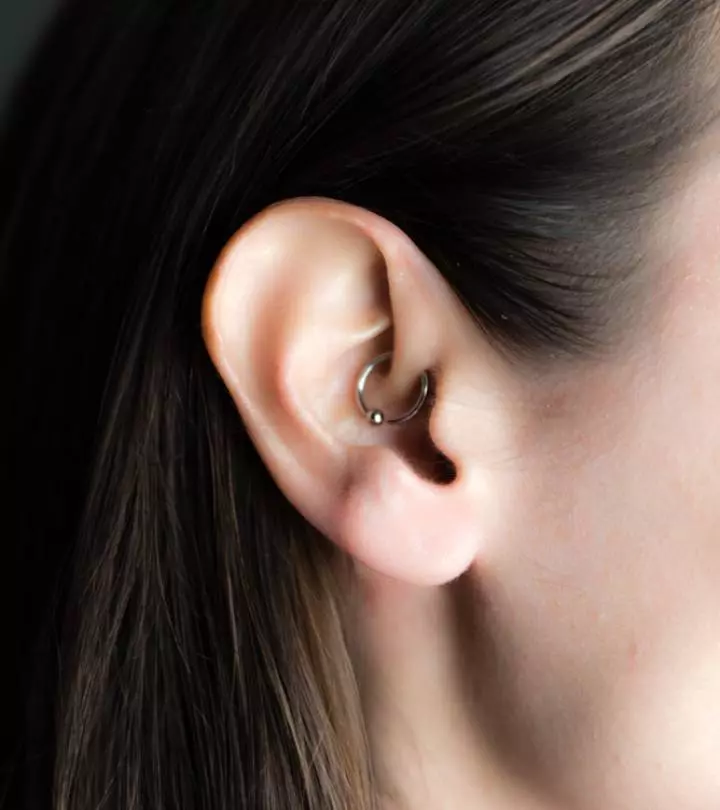


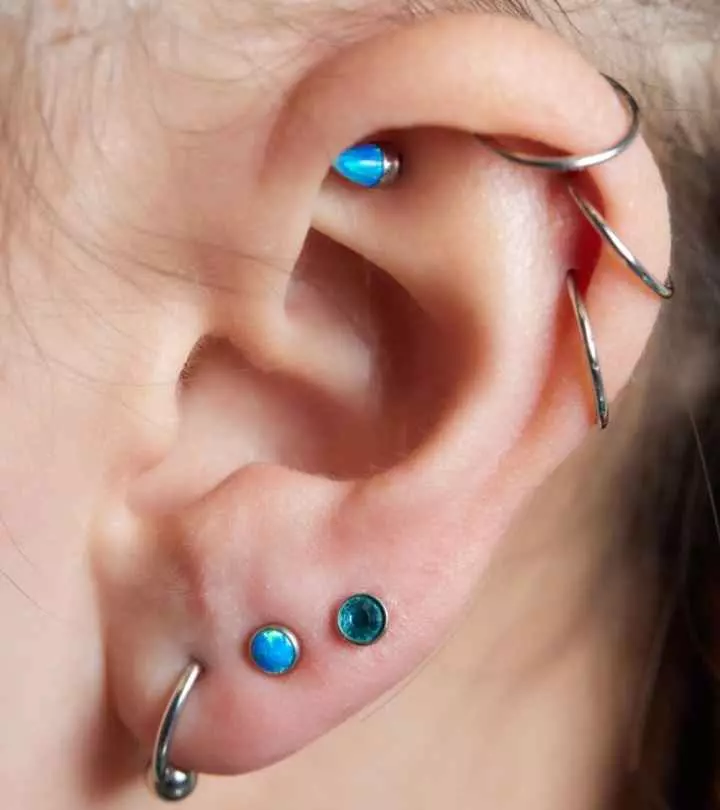

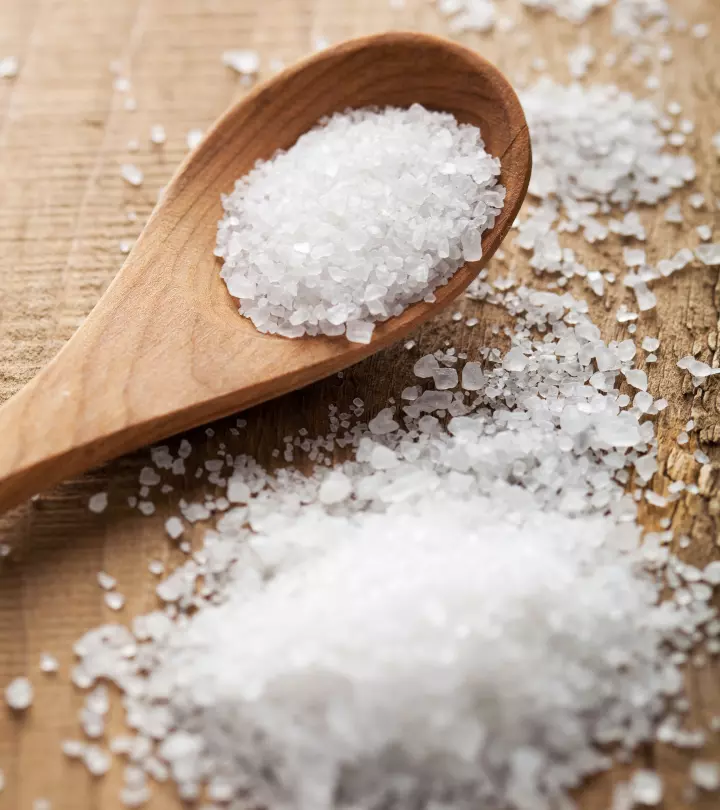
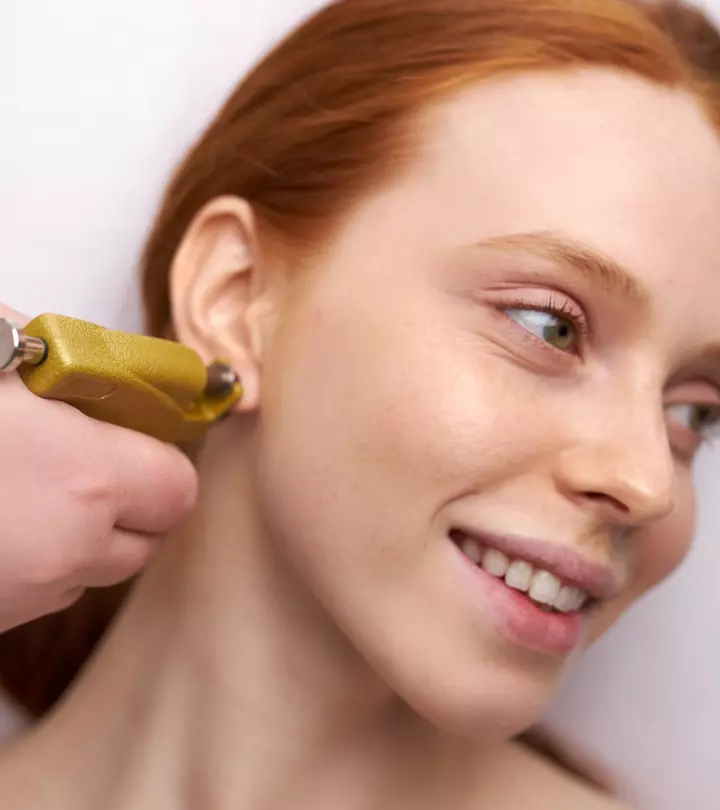
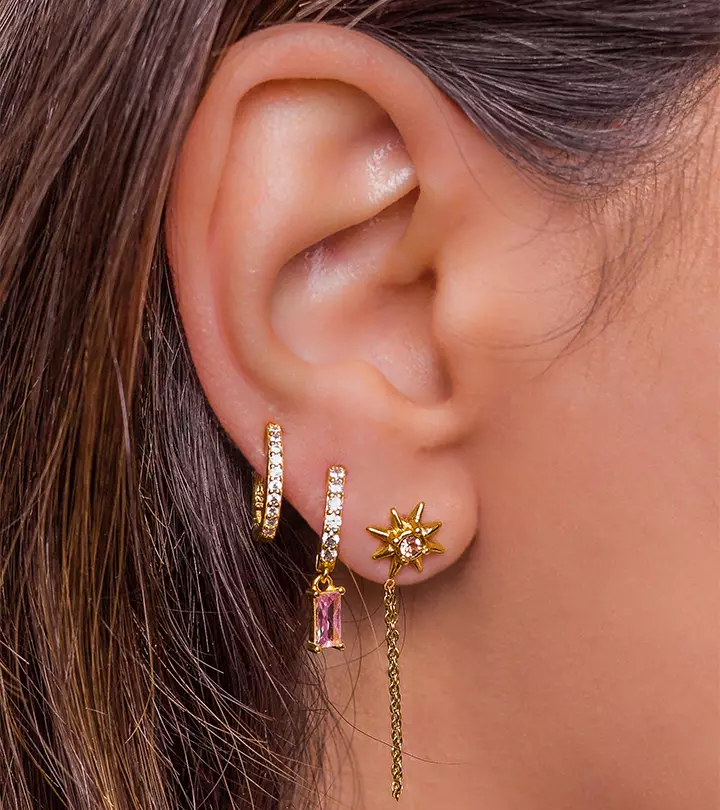
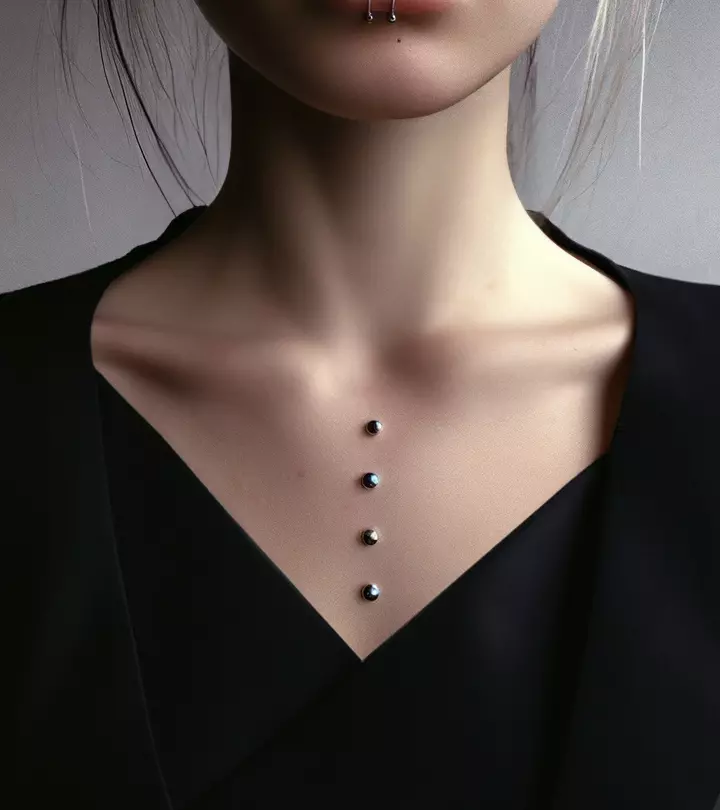
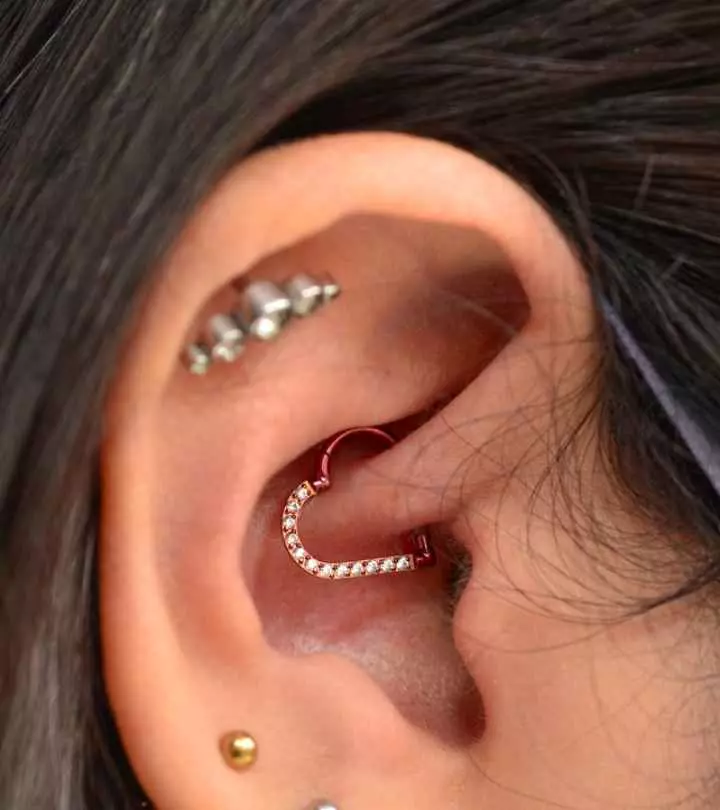
Community Experiences
Join the conversation and become a part of our empowering community! Share your stories, experiences, and insights to connect with other beauty, lifestyle, and health enthusiasts.